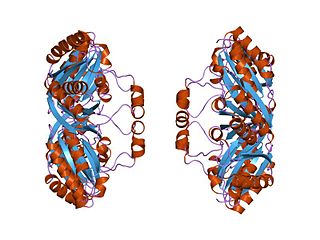
Bacilli is a taxonomic class of bacteria that includes two orders, Bacillales and Lactobacillales, which contain several well-known pathogens such as Bacillus anthracis. Bacilli are almost exclusively gram-positive bacteria.

Clostridium is a genus of anaerobic, Gram-positive bacteria. Species of Clostridium inhabit soils and the intestinal tract of animals, including humans. This genus includes several significant human pathogens, including the causative agents of botulism and tetanus. It also formerly included an important cause of diarrhea, Clostridioides difficile, which was reclassified into the Clostridioides genus in 2016.

The Clostridia are a highly polyphyletic class of Bacillota, including Clostridium and other similar genera. They are distinguished from the Bacilli by lacking aerobic respiration. They are obligate anaerobes and oxygen is toxic to them. Species of the class Clostridia are often but not always Gram-positive and have the ability to form spores. Studies show they are not a monophyletic group, and their relationships are not entirely certain. Currently, most are placed in a single order called Clostridiales, but this is not a natural group and is likely to be redefined in the future.

The Clostridiaceae are a family of the bacterial class Clostridia, and contain the genus Clostridium.

Albert Jan Kluyver ForMemRS was a Dutch microbiologist and biochemist.

In enzymology, a 3-hydroxyacyl-CoA dehydrogenase (EC 1.1.1.35) is an enzyme that catalyzes the chemical reaction

In enzymology, a 3-hydroxybutyryl-CoA dehydrogenase (EC 1.1.1.157) is an enzyme that catalyzes the chemical reaction
In enzymology, a citrate (Re)-synthase (EC 2.3.3.3) is an enzyme that catalyzes the chemical reaction

In enzymology, a phosphate acetyltransferase is an enzyme that catalyzes the chemical reaction
Clostridium chauvoei is an anaerobic, motile, Gram-positive bacterium. It is a soil-borne pathogen that can cause blackleg in cattle and sheep. It is named after Auguste Chauveau, a French bacteriologist and veterinarian.

In molecular biology the Bacterial Microcompartment (BMC) domain is a protein domain found in a variety of shell proteins, including CsoS1A, CsoS1B and CsoS1C of Thiobacillus neapolitanus and their orthologs from other bacteria. These shell proteins form the polyhedral structure of the carboxysome and related structures that plays a metabolic role in bacteria. The BMC domain consists of about 90 amino acid residues, characterized by β-α-β motif connected by a β-hairpin.
Ruminiclostridium cellulolyticum is an anaerobic, motile, gram-positive bacterium. It is the most cellulolytic bacteria.
Clostridium piliforme is an anaerobic, motile, gram-negative bacterium. It is the causing agent of Tyzzer's disease in various mammals.
Clostridium scatologenes (CLOSL) is an anaerobic, motile, gram-positive bacterium.
Moorella is a genus of bacteria belonging to the phylum Bacillota.
Succinate-semialdehyde dehydrogenase (acylating) (EC 1.2.1.76, succinyl-coA reductase, coenzyme-A-dependent succinate-semialdehyde dehydrogenase) is an enzyme with systematic name succinate semialdehyde:NADP+ oxidoreductase (CoA-acylating). This enzyme catalyses the following chemical reaction
4-hydroxybutanoyl-CoA dehydratase (EC 4.2.1.120) is an enzyme with systematic name 4-hydroxybutanoyl-CoA hydro-lyase. This enzyme catalyses the following chemical reaction
Thermoclostridium stercorarium is a cellulolytic thermophilic bacterium. It is anaerobic, spore-forming and saccharoclastic, with cells being rod-shaped and 0.7 to 0.8 by 2.7 to 7.7 µm in size. Its genome has been sequenced.
Acetivibrio straminisolvens is a moderately thermophilic, aerotolerant and cellulolytic bacterium. It is non-motile, spore-forming, straight or slightly curved rod, with type strain CSK1T. Its genome has been sequenced.







